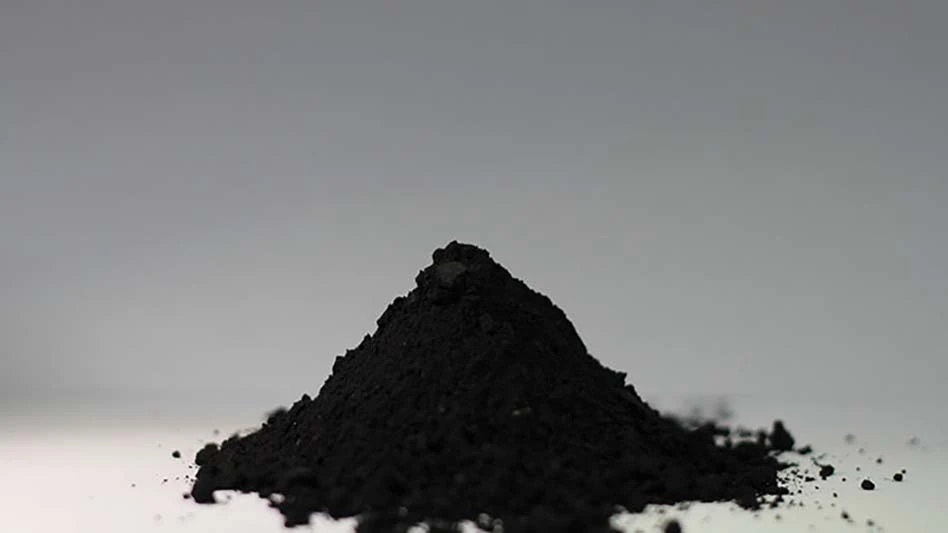
Above, from left: Jim Wiseman of SMART Recycling Mgmt.,
Brett Fisher of Neenah Foundry and David Borsuk of Sadoff Iron & Metal Co.
Making iron from raw materials may be one of the world’s longest-running manufacturing sectors, but the foundry industry in the last several decades has been infused with impressive amounts of change, according to Brett Fisher, a vice president with Wisconsin-based Neenah Foundry. Fisher, speaking at the ISRI2018 convention, held in Las Vegas in mid-April and hosted by the Washington-based Institute of Scrap Recycling Industries (ISRI), said the emergence of dozens of new iron alloys also has made ferrous scrap processing more complicated.
A change in the iron foundry business that has received attention, said Fisher, has been its consolidation in the past 60 years. He said more than 6,000 foundries were operating in the United States in 1955, but by 2015 that number had dropped to an estimated 1,935 facilities.
Another change during that same time has been an expansion in the types of gray and ductile iron produced by the foundry sector, with each new type of iron representing a different mixture of metallic alloys.
Ductile iron was not invented until 1949, and for many years after that, Fisher said, “There used to be two types of gray iron and three kinds of ductile iron.” Now, said Fisher, with iron users such as automakers seeking higher strength or lighter weight types of metal, there are 10 types of gray iron and about 50 types of ductile iron on the market and entering scrap yards.
“All have different chemical requirements—it has changed the landscape from the process standpoint,” he said, noting that melt shop managers at foundries will have different scrap specifications depending on the type of iron being produced in that batch. Scrap processors, meanwhile, can differentiate themselves by being familiar with and segregating some types of gray and ductile iron.
In general, Fisher said, Neenah Foundry prefers scrap with “good density” and with minimal amounts of “residual alloys,” and it values consistency in size, density and chemistry. Depending on the type of iron being produced, melt shops may often consider lead, antimony and boron as “deleterious” or unwelcome.
“Many of you who supply scrap can appreciate how this has become more complicated,” said David Borsuk of Wisconsin-based Sadoff Iron & Metal Co., who moderated the session at which Fisher spoke.
Jim Wiseman of Kentucky-based SMART Recycling Management, who has 40 years of scrap industry experience, said the steel mill sector also has been narrowing and tightening its ferrous scrap chemistry requirements. In the Ohio Valley region, said Wiseman, foundries are now “very specific on chemistries [and] steel mills are getting to be the same way.”
He continued, “As a processor, you may encounter mills that test incoming [scrap] chemistry very carefully. One mill asked for the metallic yield of the shred I sold.”
This can be tricky for shredding plant operators, said Wiseman, because they are “not shredding the same identical products every day,” so the yield will change.
Stated Borsuk, “We’re part of [their] supply chain and our responsibility is ever-increasing. We as quality suppliers are going to have to sharpen up our game and have procedures in place” to measure chemistry and yield.
Borsuk said offering upgraded or improved chemistry may start with what is fed into a shredder. Plant operators may have to ask themselves, for instance, regarding increased copper content in their ferrous shred, “Is it from rebar being shredded? Is it from the wire in cars? Understanding what your [shredder] inputs are is going to become more and more critical.”
ISRI2018 was April 14-19 at the Mandalay Bay Resort & Casino in Las Vegas.
Get curated news on YOUR industry.
Enter your email to receive our newsletters.
Latest from Recycling Today
- Reworld partners with Mystic Aquarium
- BIR calls for fair standards, circular solutions in defining ‘green steel’
- LME reports active Q2
- Liberty Steel assets facing financing deadlines
- Sims is part of Australian recycling loop
- Tariffs target steel exporters Brazil, Canada and South Korea
- Buy Scrap Software to showcase its software at Scrap Expo in September
- LG details recycling activities





